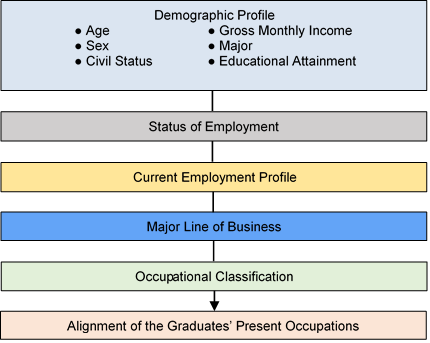Career Trajectory of the BSBA Graduates: The NEMSU Tracer Study
Authors
Abstract
Purpose: This study intended to examine the total population of college graduates from the BSBA Financial Management (FM) and the Human Resource Development Management (HRM) programs who firmly committed to develop North Eastern Mindanao State University (NEMSU) also known previously as Surigao del Sur State University (SDSSU) to be their main path for access to higher education in the year of 2030, and in an international “global” setting. Specifically. The objective of the study is to analyze the career development pathways of the BSBA batch of 2011–2019.
Method: The descriptive research approach was used in this study to precisely describe the graduates of BSBA 2011-2019 of North Eastern Mindanao State University (NEMSU), Tagbina campus. Another example of sample survey implementation is managing the scope of the study to the manageable fraction of the bigger population and able to find few key insights. Additionally, a part of the study is also dedicated to the opinion survey, as most variables relates around what respondents have seen and perceived. The type of descriptive research approach was relevant in this study, because the question is determined by determining the graduate status needed by description related to the condition of the current graduates. The tracer study was descriptive in nature, used to understand the career trajectories, job satisfaction, and professional achievement of graduates (Kresnawati et al, 2021). The education institution applied this approach in order to get a more realistic perception regarding the career path of its graduates from the graduation period to make rational decisions related to updating the curricula or designing appropriate career services for the students (Stroj et al., 2023). These studies incorporate descriptive analysis even hinting towards trends and patterns that are not only useful for benchmarking but also for measuring the efficacy of programs (Liu et al., 2023).
Findings: The employment data indicates that 73% of the respondents who remain in the country are in some form of regular or permanent employment. Between 1 and 2 months was the average time it took the graduates to get their first job, and it was reported that they spent less than 6 months in their first positions.
Unique Contribution to theory, practice, and policy: The study also reveals the prevalence of clerical support staff in both groups and stresses that there is greater need for more industry relevant curricula so as to enable graduates secure jobs as well as progress in their careers. These factors prove that tracer studies serve a great purpose in the modernization of learning structures.




